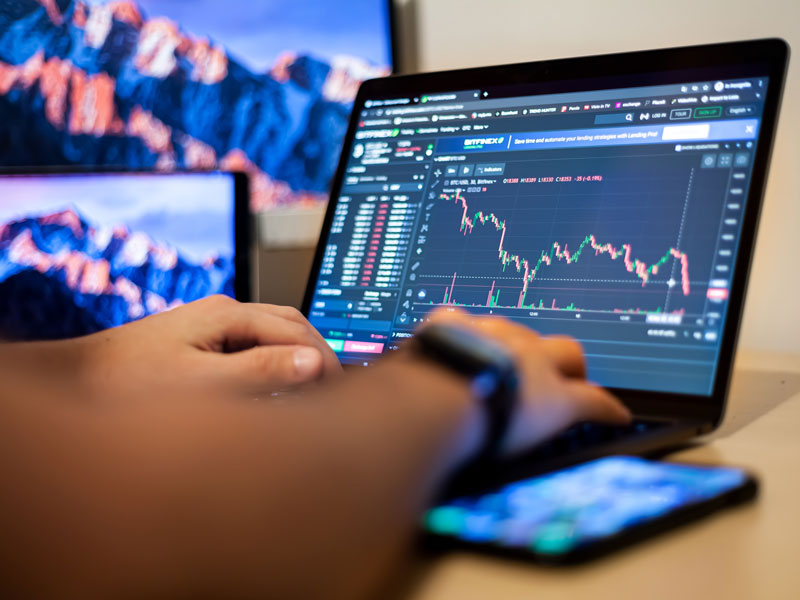
Finding the best forex trading platform Indonesia Brokers can make a significant difference in your trading experience. With the right tools, resources, and support, you increase your chances of success in the ever-volatile forex market. In this article, we will explore the top forex platforms available in 2023, delve into their features, advantages, and downsides, and provide insights into how to select the ideal platform for your trading needs.
What is Forex Trading?
Forex trading, also known as foreign exchange trading or currency trading, involves exchanging one currency for another in the hopes of making a profit. It is one of the most traded markets globally, with an estimated daily turnover of over $6 trillion. Traders aim to speculate on the price movements of currency pairs such as EUR/USD, GBP/JPY, and USD/CHF.
Why Choosing the Right Forex Trading Platform Matters
The right forex trading platform can significantly impact your trading success. The platform’s features, ease of use, trading tools, and customer support all play a role in how effectively you can trade. A good platform should offer the following:
- User-Friendly Interface: An intuitive design helps traders navigate through the platform with minimal hassle.
- Advanced Trading Tools: The inclusion of technical analysis tools, charting features, and indicators can assist traders in making informed decisions.
- Low Spreads and Fees: Lower transaction costs will help maximize your profits.
- Strong Security Measures: Ensuring your personal and financial information is safe is paramount.
- Excellent Customer Support: Responsive support can make a difference when you encounter issues or have questions.
Top Forex Trading Platforms of 2023
Let’s dive into some of the best forex trading platforms available this year, examining their notable features and what sets them apart.

1. MetaTrader 4 (MT4)
MetaTrader 4 remains one of the most popular forex trading platforms. It is known for its user-friendly interface and extensive features such as:
- Customizable Charts: Traders can create multiple chart layouts and apply various technical indicators.
- Automated Trading: MT4 supports algorithmic trading through Expert Advisors (EAs).
- Mobile Access: Traders can manage their accounts on the go using MT4’s mobile app.
However, MT4 does have its limitations, such as a lack of multi-asset trading, which may be a downside for some traders.
2. MetaTrader 5 (MT5)
MetaTrader 5 is the successor to MT4 and offers all the features of its predecessor while adding new benefits:
- More Indicators: MT5 provides additional technical indicators and market analysis tools.
- Advanced Order Types: It supports more complex order types, enhancing trading strategies.
- Multi-Asset Trading: Alongside forex, MT5 allows trading in stocks, commodities, and indices.
Though MT5 is more complex than MT4, traders looking for a comprehensive trading suite may find it worthwhile.
3. cTrader
cTrader is known for its clean interface and robust trading capabilities:
- Level II Pricing: cTrader offers real-time quotes from multiple liquidity providers, allowing traders to see the full picture.
- Automated Trading: It has cAlgo for automated trading strategies.
- Mobile Trading: cTrader has a smooth mobile app for trading on the go.
While cTrader shines in functionality and design, it may not have as large a user base as MT4 or MT5, which could affect the availability of community resources.
4. NinjaTrader
NinjaTrader is another robust platform primarily aimed at active traders:
- Advanced Analytics: Offers powerful tools for market analysis including backtesting features.
- Custom Programming: Traders can customize indicators and strategies using NinjaScript.
- Simulated Trading: Provides a demo trading environment to practice without financial risk.
However, its complexity may be overwhelming for beginners, and there are associated fees for some of its features.
How to Choose the Best Forex Trading Platform for You
Selecting the best forex platform depends on several personal factors:
- Your Experience Level: Beginners might prefer simpler platforms, while experienced traders may seek sophisticated tools.
- Trading Style: Day traders often require advanced charting tools and low latency, whereas long-term traders may prioritize fundamental analysis features.
- Asset Variety: If you plan to trade more than just forex, look for a platform with multi-asset capabilities.
- Regulation and Security: Ensure the platform is regulated by a reputable authority to protect your funds.
- Customer Support: Access to reliable support can help you troubleshoot issues efficiently.
Conclusion
In conclusion, the best forex trading platform for you will depend on your specific trading needs, style, and level of experience. Platforms such as MetaTrader 4, MetaTrader 5, cTrader, and NinjaTrader offer diverse features suited for different traders. By evaluating your requirements against the offerings of these platforms, you can make an informed choice that aligns with your trading goals. Whatever platform you choose, ensure it meets your criteria for ease of use, features, cost, and support to provide a successful trading experience.
